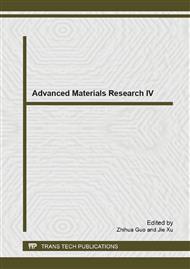p.355
p.360
p.364
p.369
p.374
p.381
p.386
p.391
p.396
Investigation of the Nanodiagnostics Probe Modes for Semiconductor Resistivity Measurements by Atomic Force Microscopy
Abstract:
The work presents the results of theoretical and experimental investigations of the features and nanodiagnostics probe modes for semiconductors resistivity measurements by current technique of atomic force microscopy and by using test silicon samples with known resistivities (0.01 Ωcm, 1 Ωcm, 5 Ωcm, 10 Ωcm). It is shown that the measured resistivity data in air and in ultrahigh vacuum (10-8 Pa) is 166 Ωcm and 10 Ωcm, respectively, for the sample with ρ = 10 Ωcm of theoretically predicted resistivity. We showed that reducing of the measurements reliability in air, due to the local anodic oxidation of the substrate surface. Experimental studies of the influence of cantilever load forces (0.3 to 6.0 μN) to the samples surface on the current distribution are presented. Based on the experimental results we developed a mathematical model for determining the resistivity of semiconductor materials by current technique of atomic force microscopy. The results are useful to the development of probe methods for nanoelectronic devices analysis by atomic force microscopy.
Info:
Periodical:
Pages:
374-378
Citation:
Online since:
February 2014
Price:
Сopyright:
© 2014 Trans Tech Publications Ltd. All Rights Reserved
Share:
Citation:


